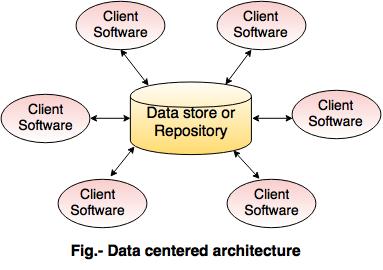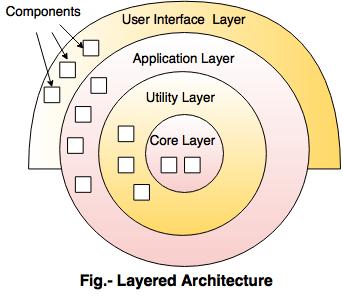Architectural styles for Software Design
The architectural styles that are used while designing the software as follows:
1. Data-centered architecture
- The data store in the file or database is occupying at the center of the architecture.
- Store data is access continuously by the other components like an update, delete, add, modify from the data store.
- Data-centered architecture helps integrity.
- Pass data between clients using the blackboard mechanism.
- The processes are independently executed by the client components.

2. Data-flow architecture
- This architecture is applied when the input data is converted into a series of manipulative components into output data.
- A pipe and filter pattern is a set of components called as filters.
- Filters are connected through pipes and transfer data from one component to the next component.
- The flow of data degenerates into a single line of transform then it is known as batch sequential.
3. Call and return architectures
This architecture style allows to achieve a program structure which is easy to modify.
Following are the sub styles exist in this category:
1. Main program or subprogram architecture- The program is divided into smaller pieces hierarchically.
- The main program invokes many of program components in the hierarchy that program components are divided into subprogram.
2. Remote procedure call architecture- The main program or subprogram components are distributed in network of multiple computers.
- The main aim is to increase the performance.
4. Object-oriented architectures
- This architecture is the latest version of call-and-return architecture.
- It consist of the bundling of data and methods.
5. Layered architectures
- The different layers are defined in the architecture. It consists of outer and inner layer.
- The components of outer layer manage the user interface operations.
- Components execute the operating system interfacing at the inner layer.
- The inner layers are application layer, utility layer and the core layer.
- In many cases, It is possible that more than one pattern is suitable and the alternate architectural style can be designed and evaluated.


